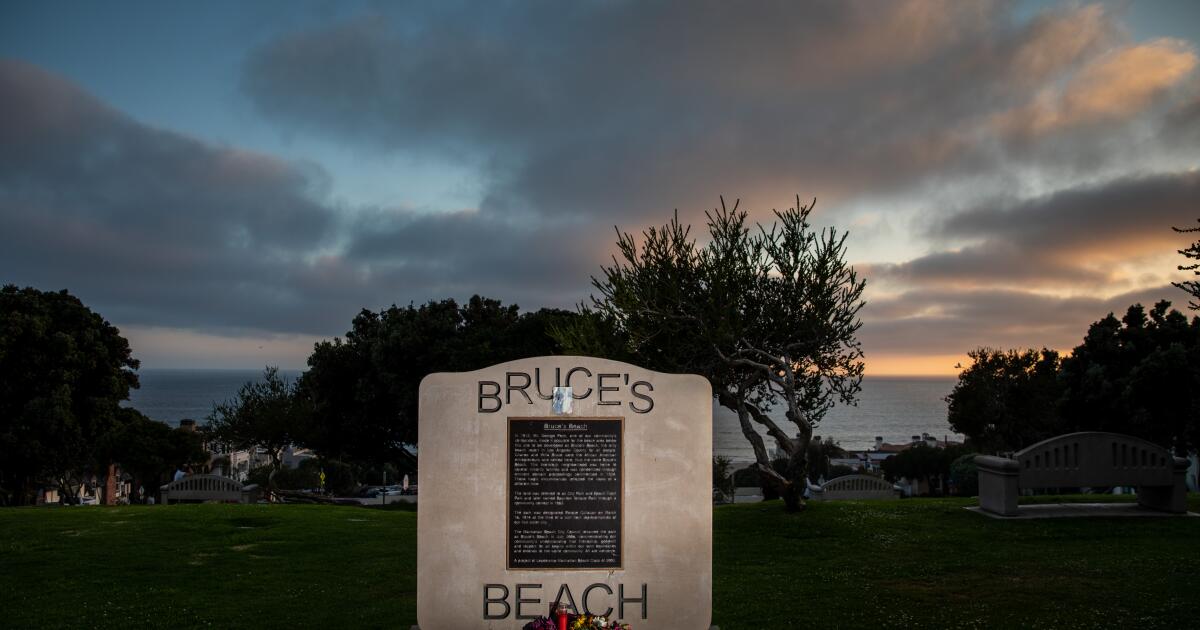
California has a history of racist land seizures. Will reparations bills bring justice?
LA TimesA memorial to Bruce’s Beach in Manhattan Beach. The legislation currently defines racially motivated eminent domain as “when the state, county, city, city and county, district, or other political subdivision of the state acquires private property for public use and does not distribute just compensation to the owner at the time of the taking, and the taking, or the failure to provide just compensation, was due, in whole or in part, to the owners’ ethnicity or race.” The state’s Office of Legal Affairs would be tasked with presenting the offending entities with possible remedies, such as the return of the seized lands, publicly owned land of equal present-day value or monetary payments. It found that 2,532 civic projects carried out in 992 cities displaced 1 million people, two-thirds of them Black Americans, making that group “five times more likely to be displaced than they should have been given their numbers in the population.” But although Black Americans have largely been the focus of state and national reparations efforts, Bradford said his eminent domain proposal applies to members of other racial groups as well. He believes Carrillo’s Chavez Ravine Accountability Act, along with Bradford’s bill, could, if successful, prompt government entities to more strongly consider racial and economic equity when considering future uses of eminent domain. What I realized with Bruce’s Beach is that this is so widespread, but nobody is focusing on Black people.” Bradford agrees that it won’t always be easy to persuade local elected officials to spend taxpayers dollars to set up their own task forces, study the potential return of publicly owned parcels, issue payouts for past land seizures and invest in other reparative measures.
History of this topic

Fight for reparations in California continues with ballot initiative
NPRReparations proposals for Black Californians advance to state Assembly
Associated PressIn California, Black lawmakers share a reparations plan with few direct payments
Associated PressDiscover Related




































